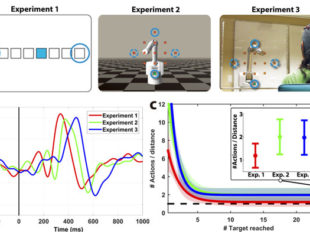Brain Computer Interfaces, more commonly known as BCIs, are the building blocks for all robotic assistive aids. It is by using BCIs that the robotic assistive aids can know and react to the intentions of their user. BCIs typically fall into one of two categories, invasive and non-invasive: Invasive BCIs are those that use medical implants to read signals from nerves within the body and non-invasive BCIs that use electrodes placed on the skin to pick up commands from the brain.
NCCR Robotics works with BCIs in a number of ways. We do not build new BCI hardware, but we concentrate on the software that makes BCIs function. We develop algorithms for use in BCI hardware that allow robots to work more efficiently with users in a number of scenarios:



